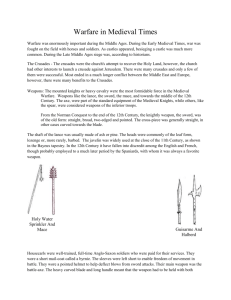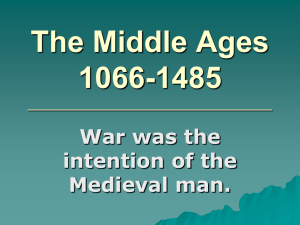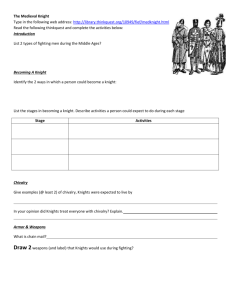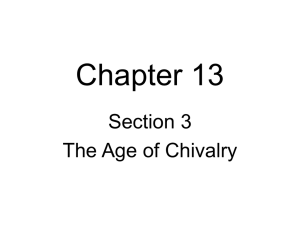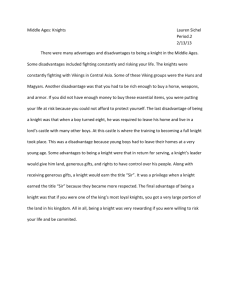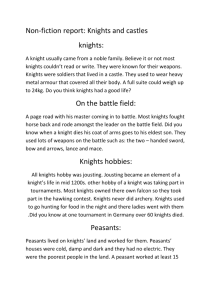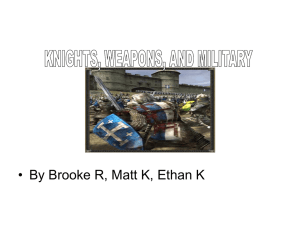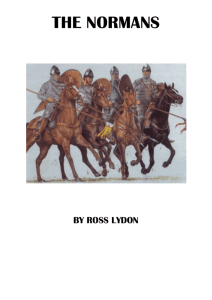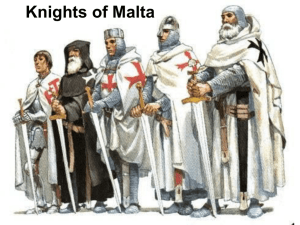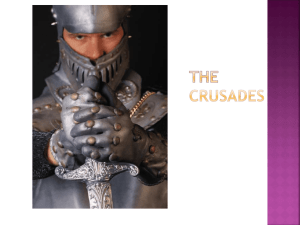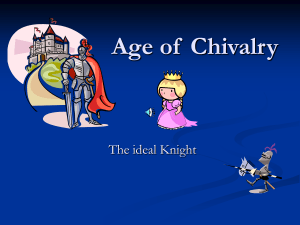13.3-the-age-of-chivalry
advertisement
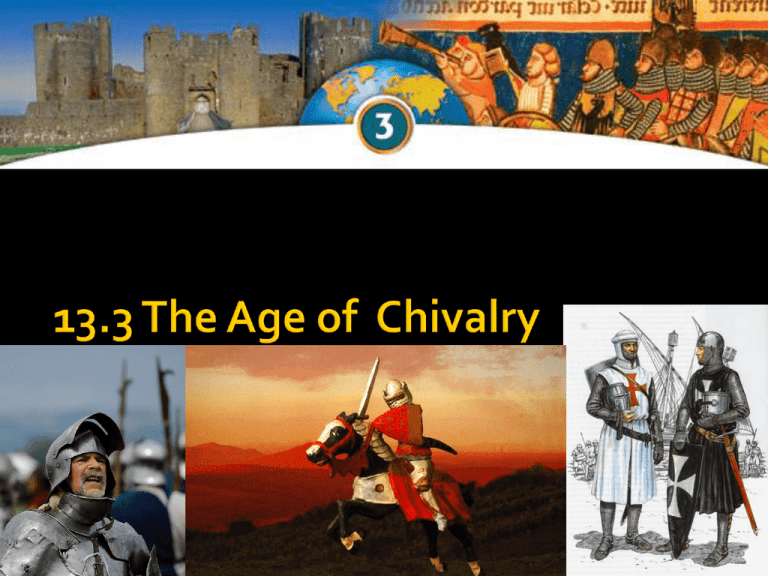
The Technology of Warfare Changes Leather saddle and stirrups enable knights to handle heavy weapons Plate Armour Chainmail Gambeson, a padded jacket worn alone or in combination with chainmail The Warrior’s Role in Feudal Society By 1000s, western Europe is a battleground of warring nobles Feudal lords raise private armies of knights Knights rewarded with land; provides income for needed weapons Tried to capture enemy & hold knights ransom One had to be “well-born” (Son of a Noble) A Knight’s Training Age 7: Page – personal servant of the Lord A Knight’s Training Age 7: Page – personal servant of the Lord Age 15: Squire – assistant to a Knight -- learn to handle: sword, lance, axe, bow & arrow A Knight’s Training Age 7: Page – personal servant of the Lord Age 15: Squire – assistant to a Knight -- learn to handle: sword, lance, axe, bow & arrow After you “prove yourself in battle” (around age 21) you could become a knight Ceremony Lord (or King) touches your shoulder 3 times with sword and says, “I dub thee knight.” Ceremony still done today! A Knight’s Training Knights gain experience, show off, and make money in tournaments -- competitions and mock battles Melee: Melee: Two groups of knights assembled in an open field Both parties rode toward each other and fought anyone who came into range. The aim of the melee was to capture an opposing knight and hold him for a ransom. A typical ransom included the cost of a suit of armor or a horse. Quintain: objective was to direct strokes at specified areas on a hanging post or shield. practice their aim with a lance, sword or battle axe. Jousting: Jousting: Jousting: Jousting: “unhorse” opponent with a lance Discuss Coats of Arms soon The Code of Chivalry By 1100s knights obey a code of chivalry—a set of ideals on how to act They are to protect weak and poor; serve feudal lord, God, chosen lady "Stitching the Standard" by Edmund Blair Leighton: the lady prepares for a knight to go to war Brutal Reality of Warfare Castles are huge fortresses where lords/ Kings live Brutal Reality of Warfare Attacking armies use wide range of strategies and weapons Siege Warfare Medieval mangonel, a type of catapult Replica battering ram at Château des Baux, France Medieval moveable siege tower Epic Poetry Epic poems recount a hero’s deeds and adventures The Song of Roland is about Charlemagne’s knights fighting Muslims Love Poems and Songs Knights’ duties to ladies are as important as those to their lords Troubadours—traveling poet-musicians—write and sing short verses Above and right: troubadours portrayed in illumined texts. Status of Women According to the Church and feudal society, women were inferior to men Noblewomen Can inherit land, defend castle, send knights to war on lord’s request Usually confined to activities of the home or convent Peasants Women Most labor in home and field, bear children, provide for family Poor, powerless, do household tasks at young age
